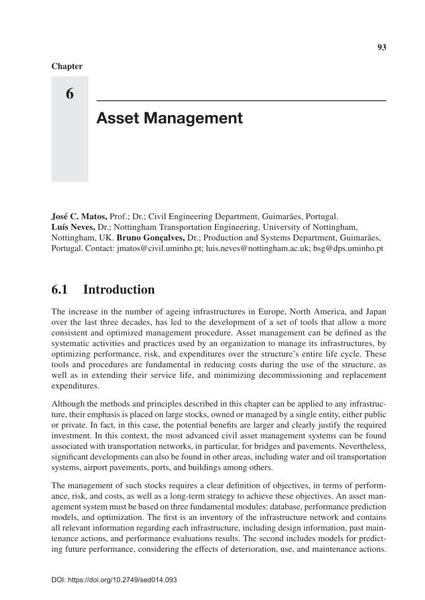Asset Management

|
|
|||||||||||
Bibliographic Details
| Author(s): |
José C. Matos
Luis Neves (Nottingham Transportation Engineering, University of Nottingham, Nottingham, UK) Bruno Gonçalves (and Systems Department, Guimarães,) |
||||
|---|---|---|---|---|---|
| Medium: | book chapter | ||||
| Language(s): | English | ||||
| Published in: | Sustainable Structural Engineering | ||||
|
|||||
| Page(s): | 93-110 | ||||
| Total no. of pages: | 17 | ||||
| Year: | 2015 | ||||
| DOI: | 10.2749/sed014.093 | ||||
| Abstract: |
The increase in the number of ageing infrastructures in Europe, North America, and Japan over the last three decades, has led to the development of a set of tools that allow a more consistent and optimized management procedure. Asset management can be defi ned as the systematic activities and practices used by an organization to manage its infrastructures, by optimizing performance, risk, and expenditures over the structure’s entire life cycle. These tools and procedures are fundamental in reducing costs during the use of the structure, as well as in extending their service life, and minimizing decommissioning and replacement expenditures. |
||||
| Keywords: |
infrastructure asset management
|
||||
| Copyright: | © 2015 International Association for Bridge and Structural Engineering (IABSE) | ||||
